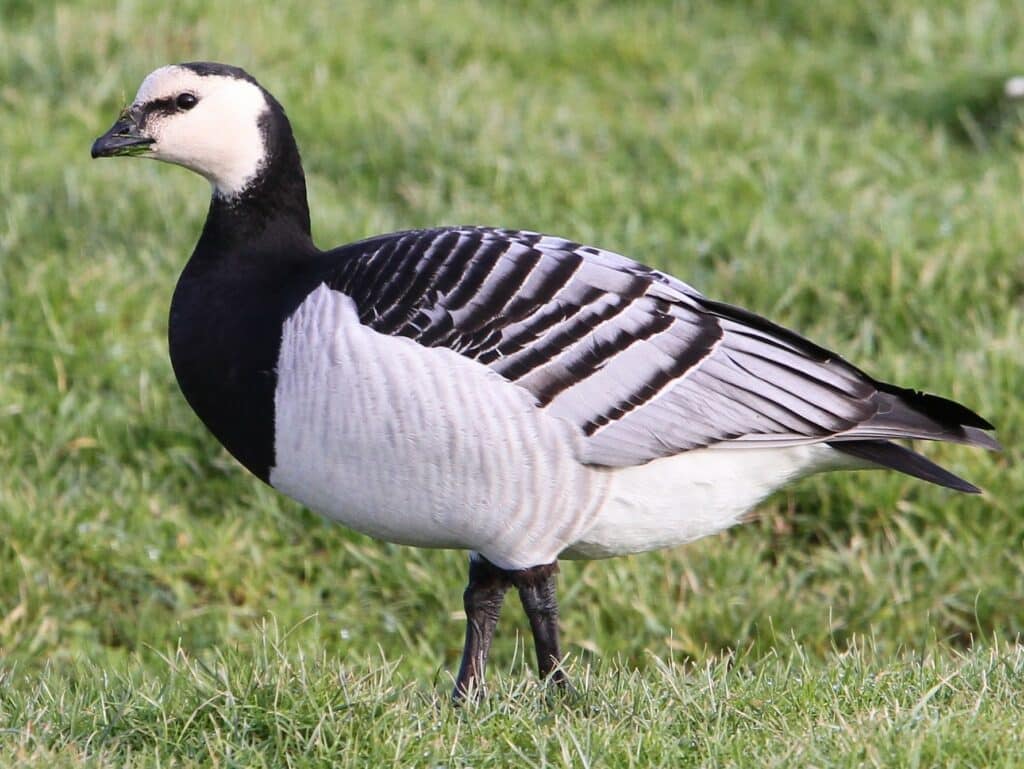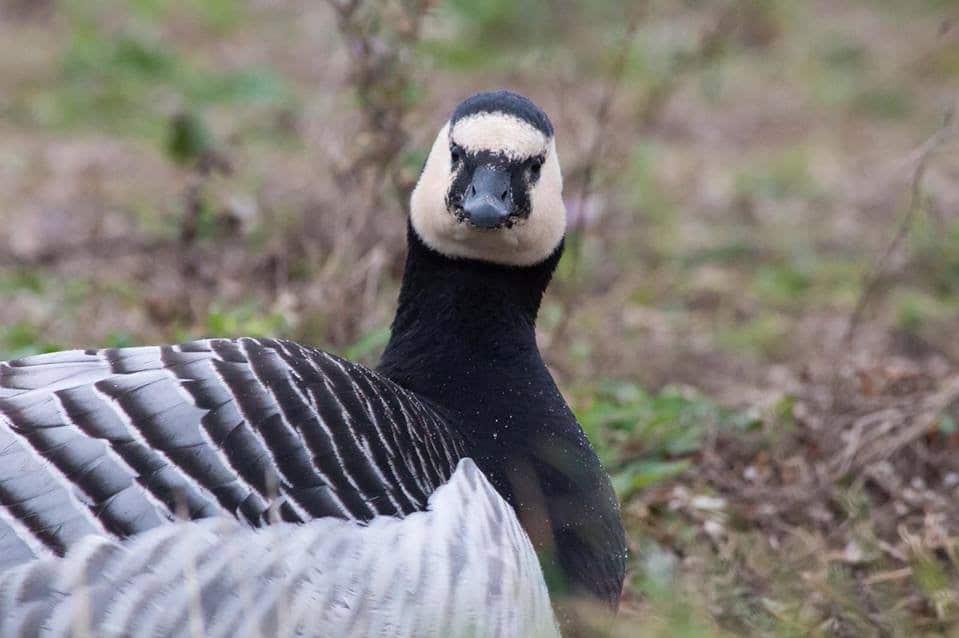The barnacle goose (Branta leucopsis) is a captivating waterbird that belongs to the family Anatidae. Known for its unique appearance and migratory behaviour, this species has intrigued researchers and bird enthusiasts for centuries. In this article, we will explore the life and characteristics of the barnacle goose, including its habitat, physical features, feeding habits, breeding and nesting behaviours, social behaviour, migratory patterns, threats, conservation efforts, and its significance in the natural world.
Habitat and Distribution
Barnacle geese primarily inhabit the coastal regions of the Arctic, including Greenland, Iceland, and northern parts of Europe. They are often found near rocky cliffs and coastal grasslands. These areas provide them with suitable nesting sites and access to their preferred food sources. During the breeding season, barnacle geese migrate to the Arctic tundra, where they establish their nests in a variety of habitats, such as mossy areas and low-lying coastal plains. The availability of suitable nesting sites and proximity to feeding areas play a crucial role in their habitat selection.
Physical Characteristics
The barnacle goose is a medium-sized waterbird with distinctive black and white plumage. Its body is predominantly white, while the head, neck, and upper breast are black. This colouration acts as camouflage, allowing them to blend with their surroundings and remain inconspicuous to potential predators. One of the most striking features of this species is its short, black beak and bright pink legs. These physical characteristics make the barnacle goose easily identifiable and visually appealing. Moreover, they have evolved specialised feathers that provide insulation and waterproofing, enabling them to thrive in their wet environments.

Feeding Habits
Barnacle geese are primarily herbivorous, feeding on various types of grasses, sedges, and mosses. They graze in flocks, often near the coastlines or in agricultural fields close to their breeding grounds. These geese are well adapted to foraging in wet environments, using their short beaks to extract vegetation from waterlogged areas. Their feeding habits play a vital role in shaping the ecosystems they inhabit, as they help control plant growth and nutrient cycling in their habitats. By consuming plant matter, barnacle geese contribute to the dispersion of seeds, aiding in the reproduction and distribution of various plant species.
Breeding and Nesting
Breeding season for barnacle geese typically occurs in late spring and early summer when the Arctic tundra experiences a burst of life. They form monogamous pairs, and courtship displays play an important role in pair bonding. The female builds a nest using plant materials and lines it with down feathers, ensuring a soft and comfortable environment for their eggs. The female usually lays around 4-6 eggs, and both parents take turns incubating them. This shared responsibility allows them to maintain their nests and protect their eggs from predators. Once the eggs hatch, the goslings are precocial, meaning they are capable of walking and swimming shortly after birth.
Social Behavior
Barnacle geese are highly social birds and are often found in large flocks, especially during the non-breeding season. They communicate using a variety of calls and visual displays, reinforcing social bonds and coordinating group movements. These geese exhibit strong family ties, and their young often stay with their parents for an extended period, learning essential survival skills before venturing out on their own. Social interactions within flocks are crucial for information sharing, mate selection, and protection against predators. By flocking together, barnacle geese increase their chances of survival, as they can detect predators more effectively and benefit from collective vigilance.

Migratory Patterns
The barnacle goose is renowned for its long-distance migrations, which are among the most impressive in the avian world. During the autumn months, they embark on an incredible journey from their breeding grounds in the Arctic to their wintering sites in the coastal areas of Western Europe, particularly in the United Kingdom and the Netherlands. This migration covers thousands of kilometres and involves crossing treacherous landscapes and vast bodies of water. Barnacle geese navigate using celestial cues, landmarks, and learned routes passed down through generations, showcasing their remarkable navigational abilities. The migration serves several purposes, including escaping the harsh Arctic winter, accessing abundant food resources, and finding suitable nesting grounds during the breeding season.
Threats and Conservation
Despite their remarkable resilience and adaptability, barnacle geese face several threats in their natural habitats. Human disturbances, habitat loss, pollution, climate change, and hunting pose significant challenges to their survival. The increasing presence of human activities, such as agriculture and infrastructure development, disrupts their nesting areas and foraging grounds. Pollution from industrial activities and the use of pesticides can contaminate their habitats and affect their overall health. Climate change also impacts barnacle geese, as alterations in environmental conditions can disrupt their feeding patterns, food availability, and timing of migration. Efforts are underway to protect and conserve their breeding grounds and wintering sites, ensuring the long-term viability of their populations. Conservation organisations collaborate with local communities, governments, and researchers to raise awareness, implement sustainable management practices, and advocate for the protection of critical habitats.
Significance in the Natural World
The barnacle goose plays a vital role in the ecosystems it inhabits. As herbivores, they contribute to the balance of plant populations and nutrient cycling. Their feeding habits shape the vegetation composition of their habitats, influencing the distribution of plant species and creating niches for other organisms. Additionally, as prey animals, they serve as a food source for predators, contributing to the intricate web of interactions in the natural world. Understanding the barnacle goose and its ecological significance helps us appreciate the interconnectedness of species and the importance of biodiversity conservation.

Conclusion
The barnacle goose is an extraordinary waterbird that captures the imagination of bird enthusiasts worldwide. From its striking appearance to its impressive migratory patterns, this species exemplifies the wonders of nature. By understanding and appreciating the barnacle goose, we can contribute to its conservation and safeguard its future for generations to come. Protecting their habitats, mitigating human-induced threats, and promoting sustainable practices are essential steps in ensuring the continued survival of this remarkable species.
Additional Resources
Sam loves to learn about animals and their habitats. He has been a nature lover from a very young age, and has been writing papers and articles about wildlife for as long as he can remember.
